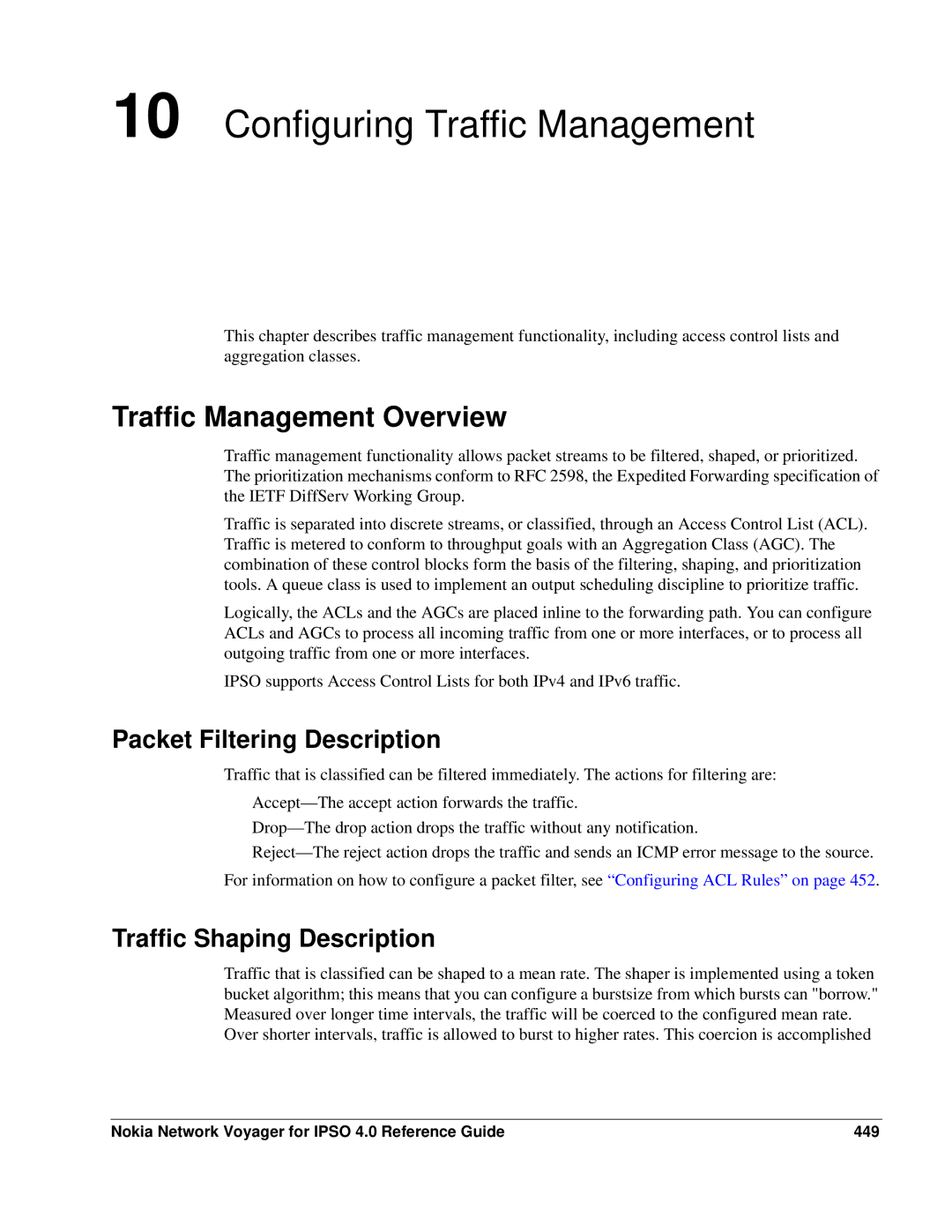10 Configuring Traffic Management
This chapter describes traffic management functionality, including access control lists and aggregation classes.
Traffic Management Overview
Traffic management functionality allows packet streams to be filtered, shaped, or prioritized. The prioritization mechanisms conform to RFC 2598, the Expedited Forwarding specification of the IETF DiffServ Working Group.
Traffic is separated into discrete streams, or classified, through an Access Control List (ACL). Traffic is metered to conform to throughput goals with an Aggregation Class (AGC). The combination of these control blocks form the basis of the filtering, shaping, and prioritization tools. A queue class is used to implement an output scheduling discipline to prioritize traffic.
Logically, the ACLs and the AGCs are placed inline to the forwarding path. You can configure ACLs and AGCs to process all incoming traffic from one or more interfaces, or to process all outgoing traffic from one or more interfaces.
IPSO supports Access Control Lists for both IPv4 and IPv6 traffic.
Packet Filtering Description
Traffic that is classified can be filtered immediately. The actions for filtering are:
For information on how to configure a packet filter, see “Configuring ACL Rules” on page 452.
Traffic Shaping Description
Traffic that is classified can be shaped to a mean rate. The shaper is implemented using a token bucket algorithm; this means that you can configure a burstsize from which bursts can "borrow." Measured over longer time intervals, the traffic will be coerced to the configured mean rate.
Over shorter intervals, traffic is allowed to burst to higher rates. This coercion is accomplished
Nokia Network Voyager for IPSO 4.0 Reference Guide | 449 |
